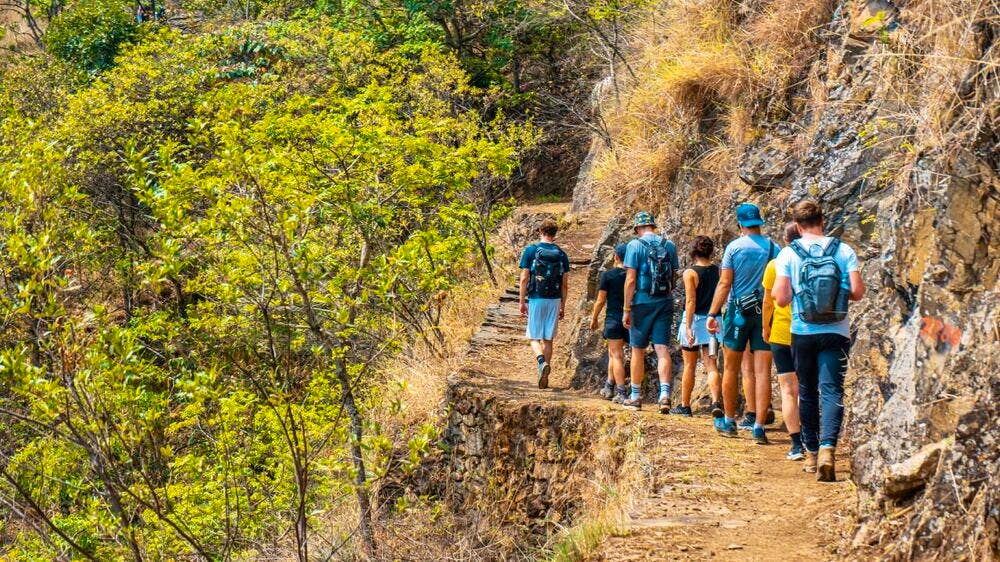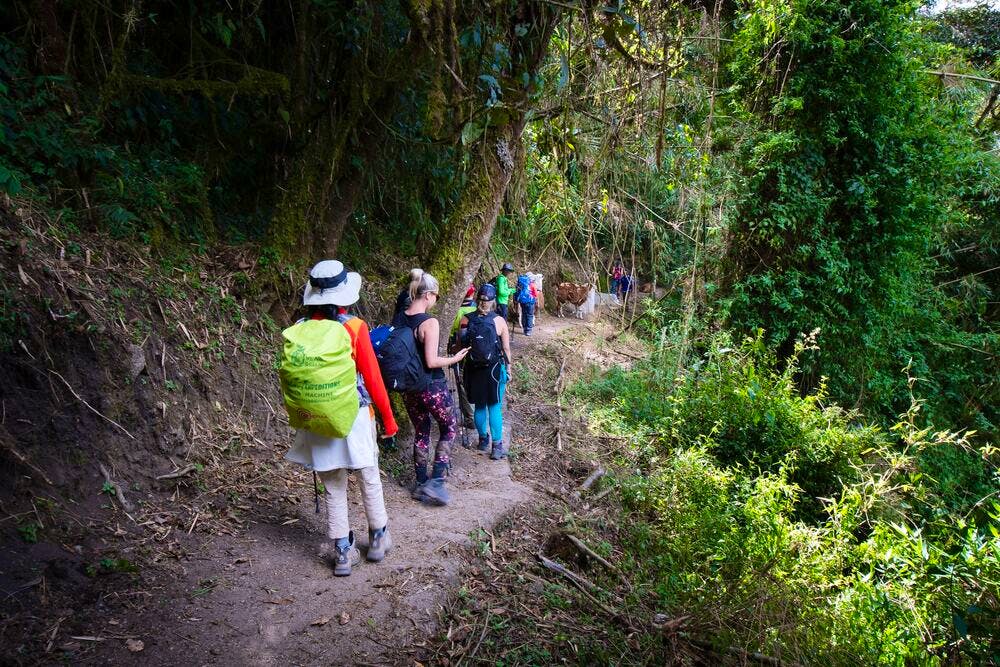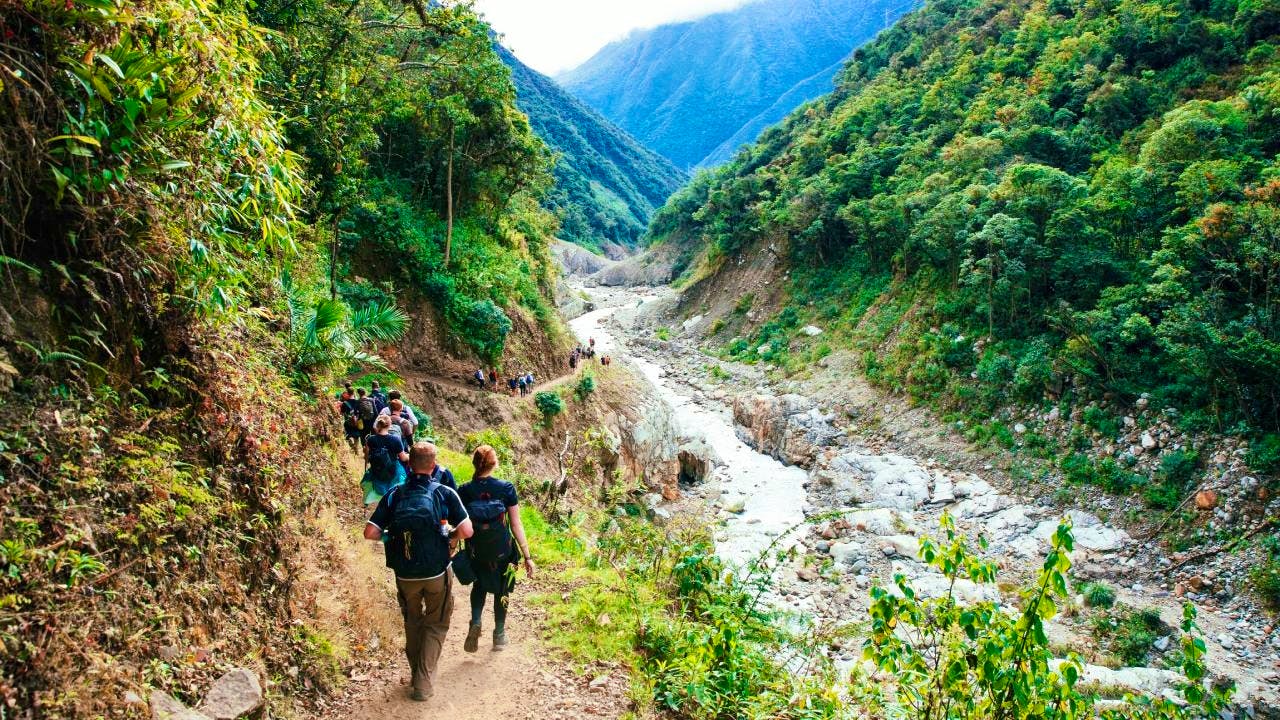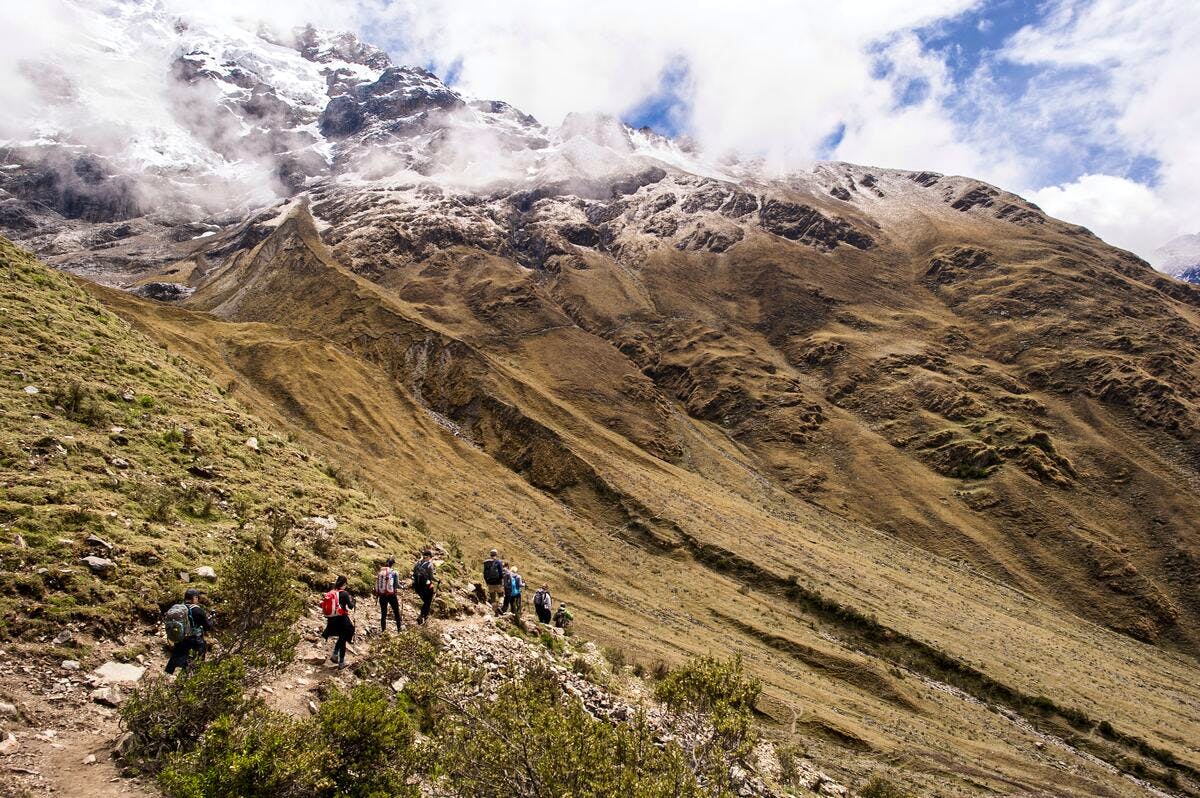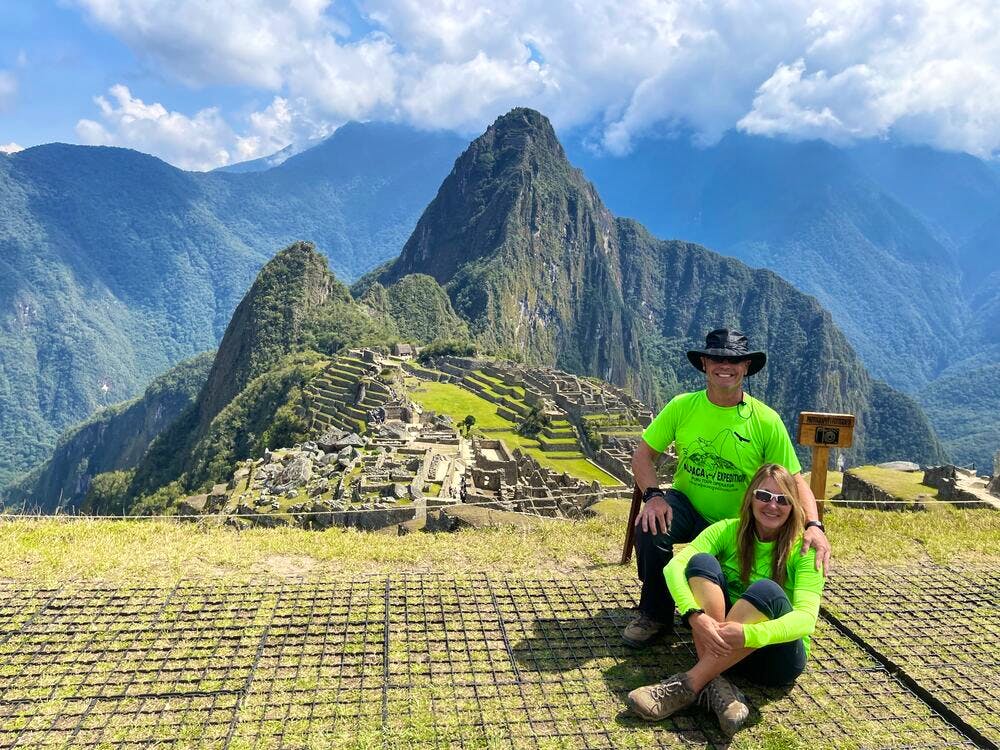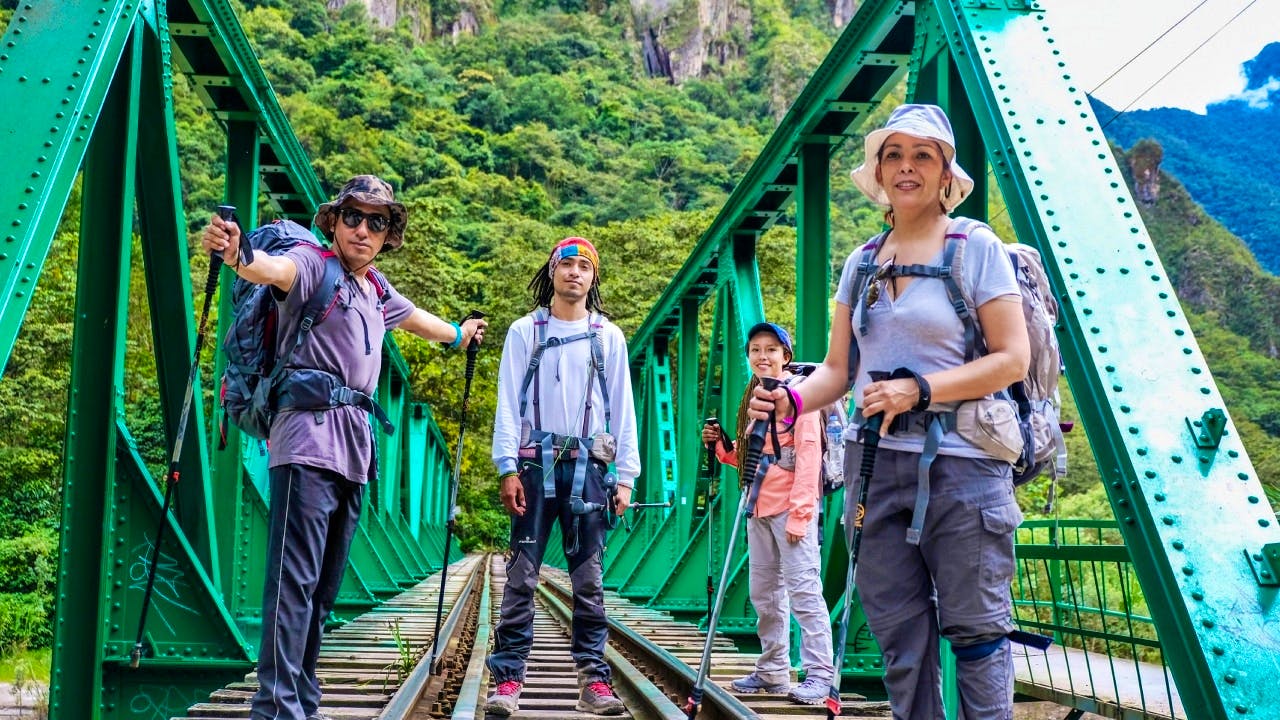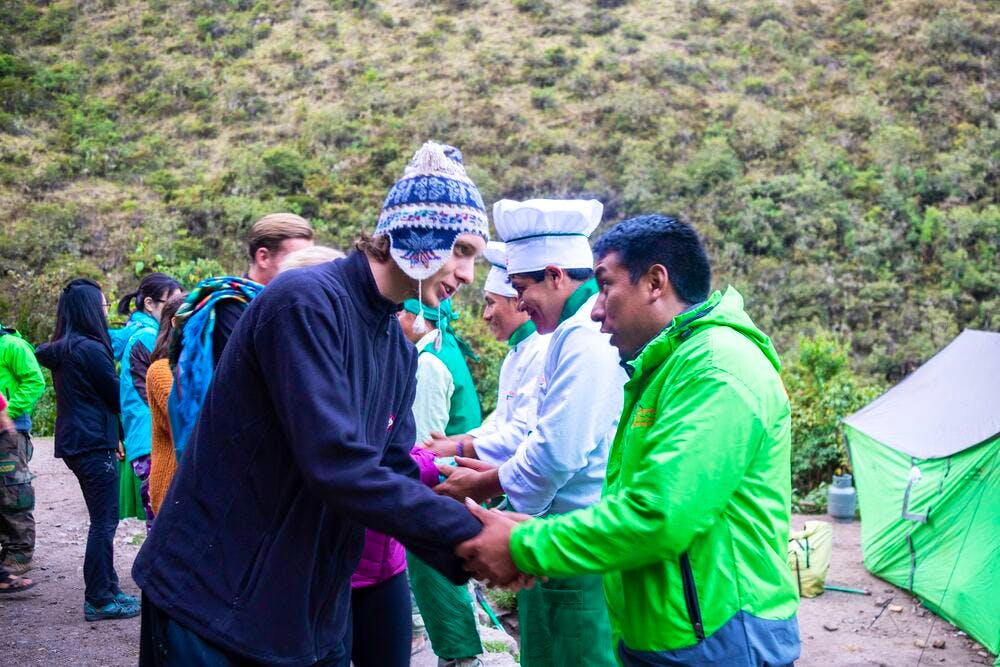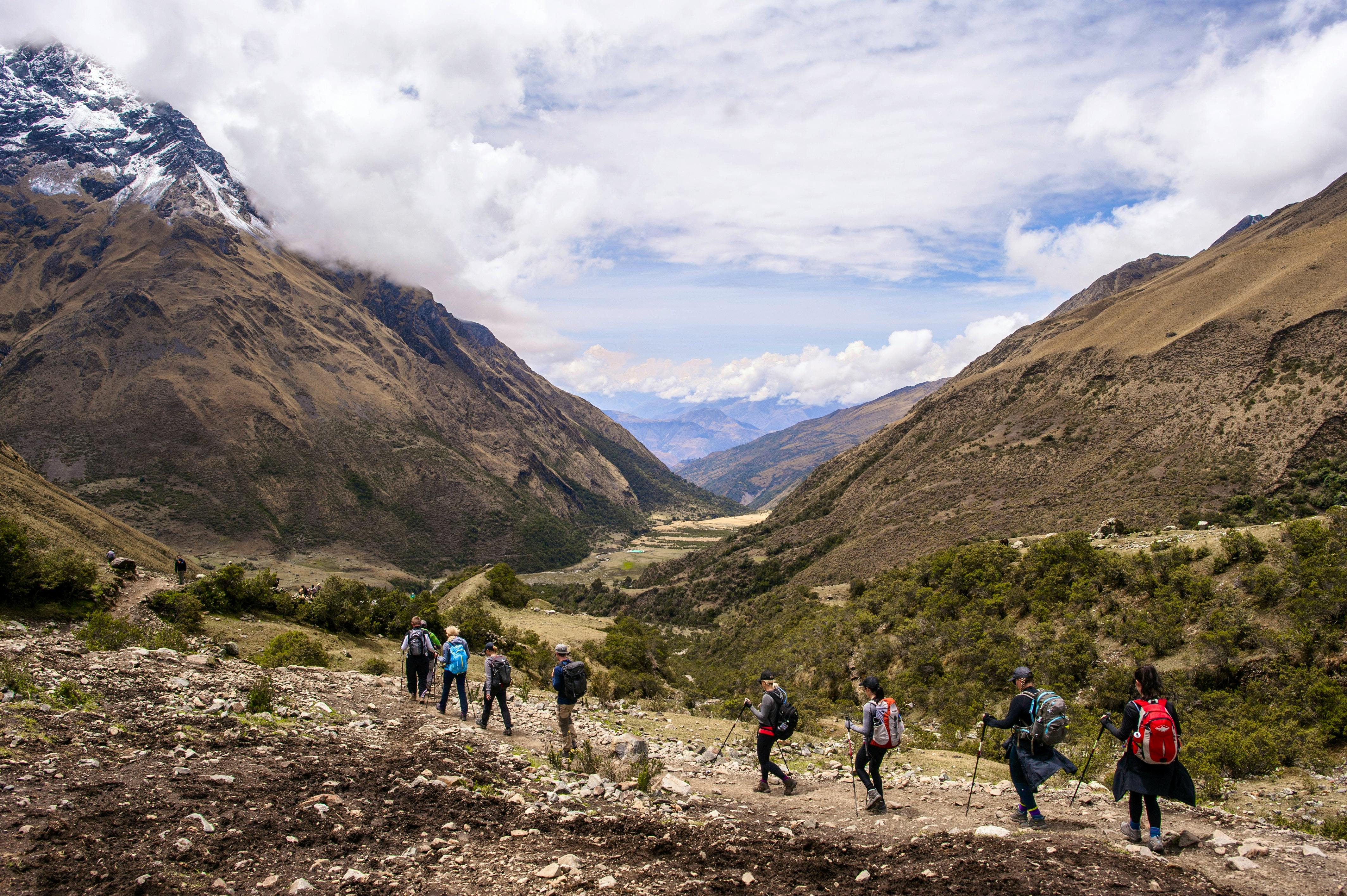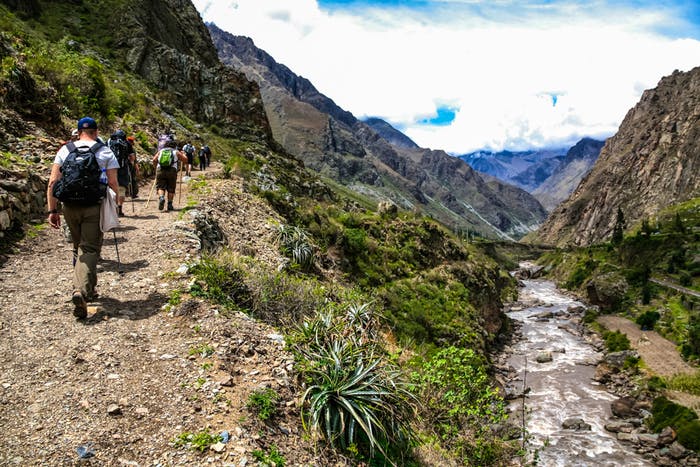Why visit Machu Picchu? Visiting and embarking on a
Machu Picchu hike is a dream come true for many adventurers. However, a successful journey requires a well-thought-out Machu Picchu training plan.
Why Training For Your Machu Picchu Hike is Essential
So, you’ve got your heart set on conquering the
Inca Trail and basking in the awe-inspiring beauty of
Montaña Machu Picchu. That’s fantastic! But let’s get one thing straight: this isn’t a leisurely walk in the park.
As far as
hiking Machu Picchu difficulty goes, you’ll be walking around 7-10 miles each day, and that’s not on flat ground. Trust us, your legs, lungs, and even your mental stamina will be put to the test.
Now, let’s talk about the elephant in the room—altitude. The trek’s highest point, known as Dead Woman’s Pass, reaches an altitude of almost 4,000 meters.
The air is thinner at these heights, making it harder to breathe and increasing the risk of
Machu Picchu altitude sickness. Symptoms can range from mild headaches and nausea to severe complications that require immediate medical attention.
Training isn’t just about building muscle or increasing your stamina; it’s about preparing your body for the unique challenges of high-altitude trekking and not becoming another statistic in
Machu Picchu deaths per year.
A well-rounded training plan will improve your physical capabilities and help you acclimate to the altitude, reducing the risk of sickness and ensuring you can fully enjoy this once-in-a-lifetime experience.
Assessing Your Current Fitness Level
Before diving into any Machu Picchu training plan, assessing your current fitness level is crucial for any hiking
activities in Machu Picchu.
Knowing where you stand will help you tailor a training regimen that’s both challenging and achievable. Let’s break it down into three categories: Beginner, Intermediate, and Advanced.
If you find yourself winded after a short walk or have never set foot on a hiking trail, you fall into the Beginner category. Don’t worry; everyone starts somewhere! But it’s essential to begin your training at least 4-6 months to build the necessary stamina and strength.
You’re in the Intermediate category if you exercise occasionally and have done some hiking but nothing as demanding as the Inca Trail. You should aim to start your training 3-4 months in advance. This will give you ample time to ramp up your workouts and get accustomed to longer hikes.
If you’re already an active person who exercises regularly and has experience with multi-day hikes, you’re in the Advanced category. Even so, don’t get too comfortable. The unique challenges of high-altitude trekking mean you should still give yourself at least a month to fine-tune your training.
Creating a Tailored Fitness Plan
Include the following exercises when creating your tailored Machu Picchu training plan.
Endurance training improves your body’s ability to use oxygen efficiently, which is vital when trekking at high altitudes where the air is thin.
A robust cardiovascular system will help you maintain a steady pace, recover quickly from bursts of intense activity like steep climbs, and reduce fatigue.
Ready to get that heart rate up? Here are some exercises that are both effective and versatile, meaning you can do them almost anywhere:
Running: A classic but effective way to build endurance. Start with a comfortable pace and gradually increase your distance each week.
Brisk Walking: If running isn’t your thing, brisk walking is an excellent alternative. It’s easier on the joints and still provides a good cardiovascular workout.
Cycling: Whether it’s a leisurely bike ride or a spin class, cycling is a great way to improve your cardiovascular health while giving your joints a break from the impact of running or walking.
Swimming: Looking for a full-body workout that’s easy on the joints? Jump in the pool. Swimming is an excellent cardiovascular exercise that also engages multiple muscle groups.
Remember, the key to effective cardiovascular training is consistency.
Aim for at least 30 minutes of moderate-intensity exercise most days of the week, and you’ll be well on your way to conquering Machu Picchu.
Your legs are your primary mode of transportation on the
Machu Picchu circuits, so building strength in your hamstrings, quadriceps, and calves is crucial.
A strong core is equally important; it helps with balance, posture, and overall stability, reducing the risk of injury.
Ready to hit the gym—or maybe the living room floor? Here are some exercises that target the legs and core:
Squats: The quintessential leg exercise. Squats work your quads, hamstrings, and glutes. Start with bodyweight squats and add weights as you get more comfortable.
Lunges: Another excellent exercise for the legs. Lunges work the same muscle groups as squats but improve balance and coordination.
Crunches: Time to work that core! Crunches are a straightforward but effective way to strengthen your abdominal muscles.
Leg Raises: These target the lower abdominal muscles and engage the hip flexors. A strong core isn’t just about the abs; it’s a full-body effort.
Consistency is key in strength training. Aim to incorporate these exercises into your routine at least 2-3 times weekly. You can add more sets, reps, or exercises to keep challenging your muscles as you progress.
Flexibility helps muscle recovery, reducing the risk of injuries like strains and sprains. Balance and core strength are invaluable when you’re trekking on uneven surfaces.

Latest Deals
Discover trips on sale on Skyhook. Book once-in-a-lifetime adventures at discounted prices.
Suggested Stretches and Yoga Poses
Ready to get bendy? Here are some stretches and
yoga poses that can help improve your flexibility and balance:
Hamstring Stretch: Sit on the floor with one leg extended and the other bent. Reach for your toes on the extended leg while keeping your back straight. This stretch targets the hamstrings and lower back.
Quad Stretch: Stand on one leg and pull the other foot towards your glutes. Hold onto a wall or chair for balance. This stretch works the quadriceps.
Downward Dog: A classic yoga pose that stretches the entire backside of your body, from your heels to your hands.
Tree Pose: Stand on one leg and place the other foot on the inner thigh of the standing leg. Extend your arms above your head. This pose is excellent for balance and core strength.
Incorporate these stretches and poses into your training routine, ideally after cardiovascular or strength workouts. Consistency is critical, so stretch at least 3-4 times a week.
Gear Up: Knowing Your Equipment
Ever heard the saying, “Don’t fix what ain’t broken?” Well, when it comes to hiking gear, the opposite is true: “Break in what is new.”
New boots can be stiff and uncomfortable, leading to blisters and sore feet. The same goes for new backpacks or trekking poles.
Spend time breaking in your gear before adding it to your
Inca trail packing list. Take several shorter hikes to get accustomed to how everything feels.
What to Look for in Hiking Boots and Clothing
Regarding hiking boots, look for a pair with good ankle support and a sturdy, grippy sole. Your boots should be waterproof and breathable to keep your feet dry and comfortable.
As for clothing, opt for moisture-wicking fabrics that dry quickly. Avoid cotton, as it retains moisture and can make you feel cold and damp. Layering is critical: a base layer to wick moisture, an insulating layer to trap heat, and a waterproof outer layer to protect against the
Machu Picchu weather.
Remember, your gear is your lifeline on the trail. Invest in quality items and take the time to get to know them. Your body will thank you when standing atop Machu Picchu, taking in the breathtaking views.
While physical training is a significant part of your Machu Picchu trek preparation, mental stamina is equally crucial.
The trail will test not just your body but also your mind. Long days, challenging terrains, and high altitudes can affect your mental well-being. That’s why mental preparation is a must.
Visualization: Before your trek, take some time to visualize completing the trail successfully. This mental rehearsal can boost confidence and help you tackle challenges more effectively.
Mindfulness: Practicing mindfulness can help you become aware of your thoughts and feelings, allowing you to manage stress and fatigue better.
Positive Affirmations: Simple affirmations like “I can do this” or “I am strong” can go a long way in boosting your mental stamina. Repeat them during challenging parts of the trek.
Importance of a Strong Mindset
A strong mindset can be your greatest asset on the trail. It helps you push through physical discomfort, overcome obstacles, and stay focused on your goal: reaching Machu Picchu. Mental strength complements physical endurance, making you an all-around better trekker.
Remember, your mind can either be your greatest ally or your biggest obstacle. Train it well, and it will carry you through the most challenging parts of your adventure.
Month-by-Month Machu Picchu Training Plan
Preparing for a trek like Machu Picchu doesn’t happen overnight. It requires consistent effort and a well-structured training plan.
Below is a sample 3-month training plan to get you trek-ready. Feel free to adjust the plan according to your fitness level and schedule.
Week | Cardiovascular Training | Strength Training | Flexibility and Balance | Mental Preparation |
Month 1 | | | | |
1 | 20-min brisk walk (3x) | Squats (2 sets of 10) | 5-min stretching | 5-min mindfulness |
2 | 25-min brisk walk (3x) | Squats & Lunges (2 sets of 10 each) | 5-min stretching & basic yoga poses | 5-min mindfulness |
3 | 30-min brisk walk or jog (3x) | Squats, Lunges & Crunches (2 sets of 10 each) | 10-min stretching & basic yoga poses | 10-min mindfulness |
4 | 35-min brisk walk or jog (3x) | Squats, Lunges, Crunches & Leg Raises (2 sets of 10 each) | 10-min stretching & basic yoga poses | 10-min mindfulness |
Month 2 | | | | |
1 | 40-min jog (3x) | Add weights to Squats & Lunges (2 sets of 10 each) | 15-min stretching & intermediate yoga poses | 10-min visualization |
2 | 45-min jog or cycle (3x) | Add weights to all exercises (2 sets of 12 each) | 15-min stretching & intermediate yoga poses | 10-min visualization |
3 | 50-min jog or cycle (3x) | Increase to 3 sets of all exercises | 20-min stretching & intermediate yoga poses | 15-min mindfulness |
4 | 55-min jog or cycle (3x) | Increase to 3 sets of all exercises | 20-min stretching & advanced yoga poses | 15-min mindfulness |
Month 3 | | | | |
1 | 60-min jog or cycle (4x) | Increase to 4 sets of all exercises | 25-min stretching & advanced yoga poses | 20-min mindfulness |
2 | 65-min jog or cycle (4x) | Increase to 4 sets of all exercises | 25-min stretching & advanced yoga poses | 20-min mindfulness & affirmations |
3 | 70-min jog or cycle (4x) | Maintain 4 sets of all exercises | 30-min stretching & advanced yoga poses | 20-min mindfulness & affirmations |
4 | 75-min jog or cycle (4x) | Maintain 4 sets of all exercises | 30-min stretching & advanced yoga poses | 20-min mindfulness & affirmations |
Embarking on a Machu Picchu trek is a
Peru adventure that will leave you with memories for a lifetime. But to fully enjoy this incredible journey, preparation is key.
Other Machu Picchu Articles
